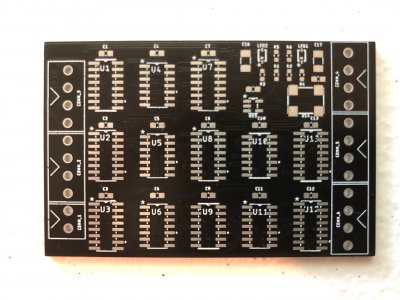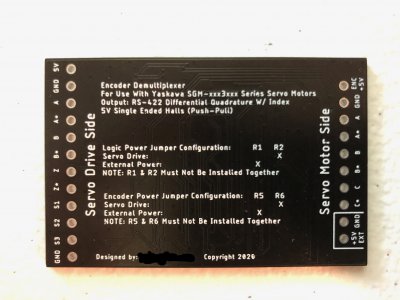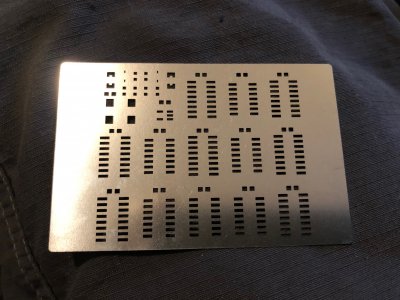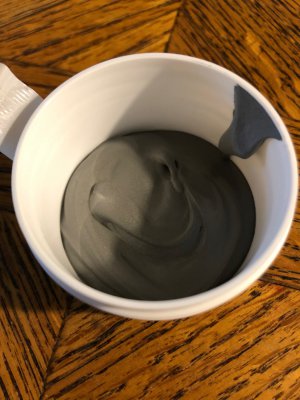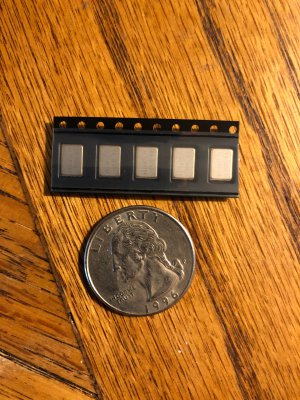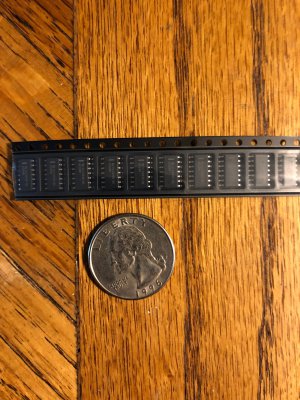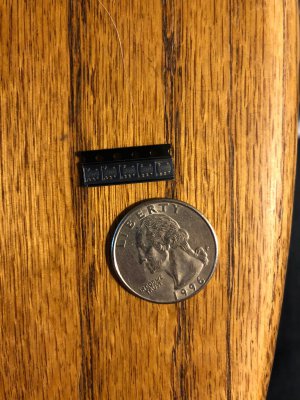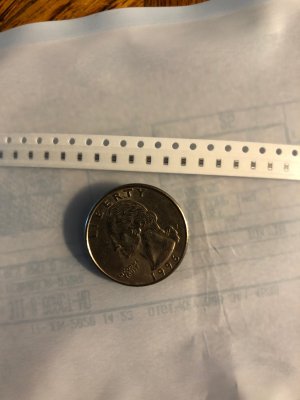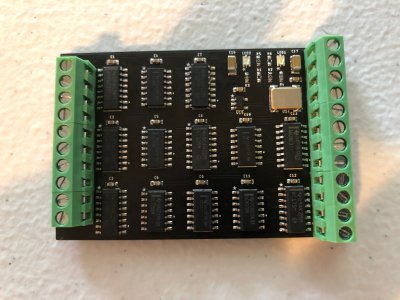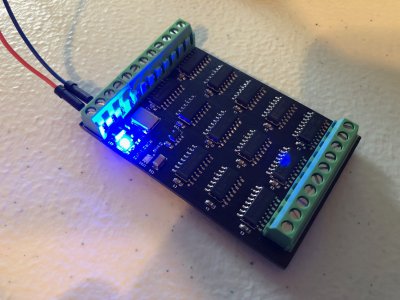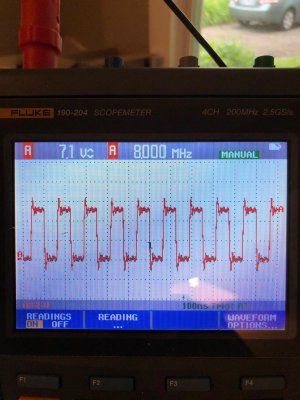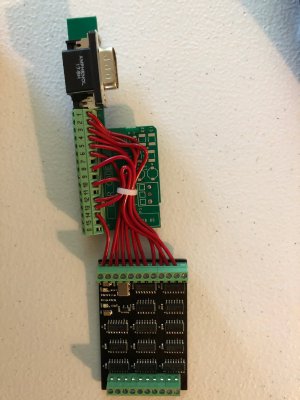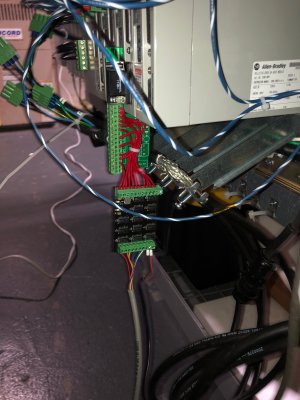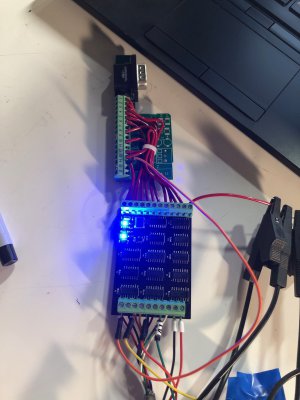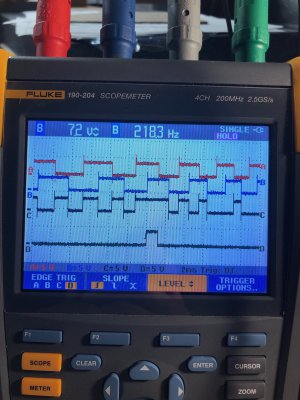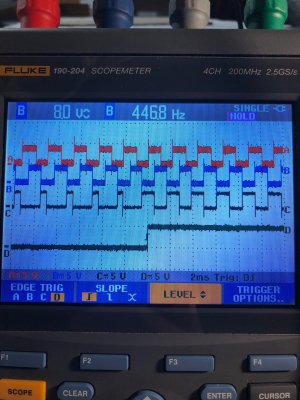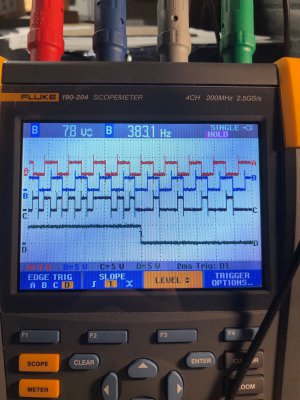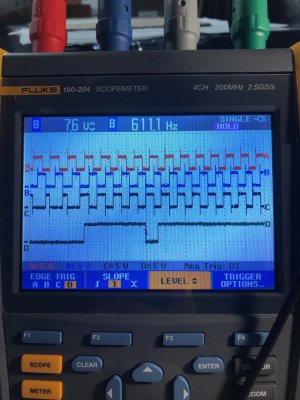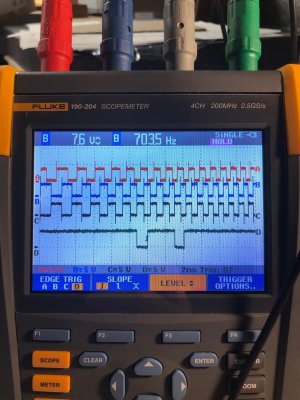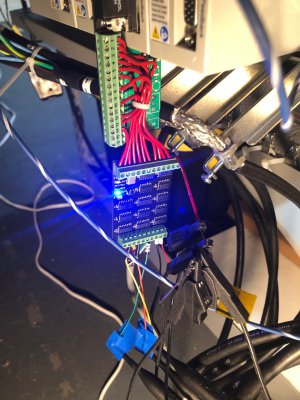- Joined
- Mar 26, 2018
- Messages
- 2,724
Board is routed!
I gave it a good go trying to do it by hand, but kept getting myself stuck. Ran the autorouter and was able to find a solution that worked well. I spent some extra time cleaning up the traces it left with sharp corners or weird squiggly lines. I added a ton of GND vias to stitch the planes together.
The board passes a design rule check with 10 thou traces and 10 thou spacing.
I still need to do the following:
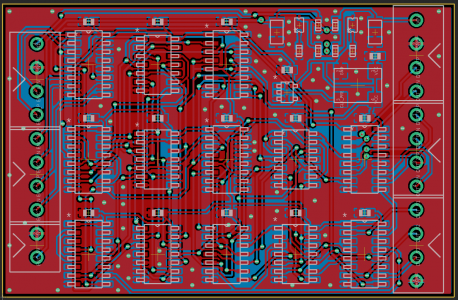
A couple of features that I added last minute were two blue LEDS. One to indicate logic power and one for encoder power. Additionally, I included solder jumper pads to select between the logic being powered by the servo drive or the external power supply, and a second set for the encoder.
For my robot, I cannot power the encoder from the drive, but if anyone ever wanted to run just a single motor connected to a drive, then the drive power supply could be used by changing the jumper on the board.
100uF ceramic caps filter both power supplies, and a larger buffer package was added because I had space. Every chip is decoupled by a 0.1uF ceramic cap.
I opted for no mounting holes at this time to keep the size down. It will hang in-line with the encoder cable, probably just below the drive.
I gave it a good go trying to do it by hand, but kept getting myself stuck. Ran the autorouter and was able to find a solution that worked well. I spent some extra time cleaning up the traces it left with sharp corners or weird squiggly lines. I added a ton of GND vias to stitch the planes together.
The board passes a design rule check with 10 thou traces and 10 thou spacing.
I still need to do the following:
- Finish stitching the GND planes
- Verify the schematic one more time
- Quadruple check the terminal block spacing (I want them to snap together)
- Manually add device labels and silk screen text.

A couple of features that I added last minute were two blue LEDS. One to indicate logic power and one for encoder power. Additionally, I included solder jumper pads to select between the logic being powered by the servo drive or the external power supply, and a second set for the encoder.
For my robot, I cannot power the encoder from the drive, but if anyone ever wanted to run just a single motor connected to a drive, then the drive power supply could be used by changing the jumper on the board.
100uF ceramic caps filter both power supplies, and a larger buffer package was added because I had space. Every chip is decoupled by a 0.1uF ceramic cap.
I opted for no mounting holes at this time to keep the size down. It will hang in-line with the encoder cable, probably just below the drive.


